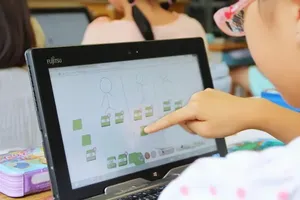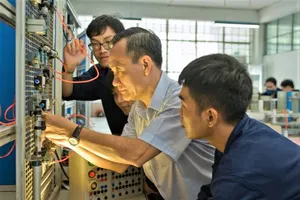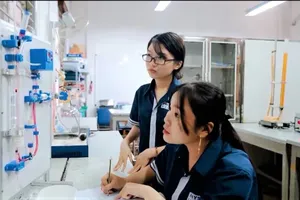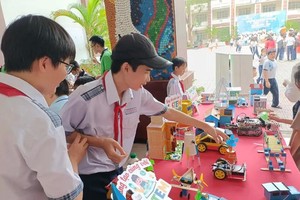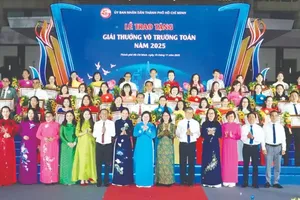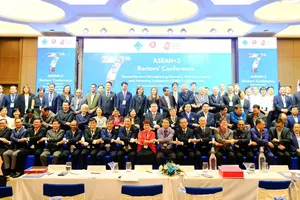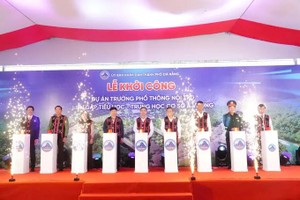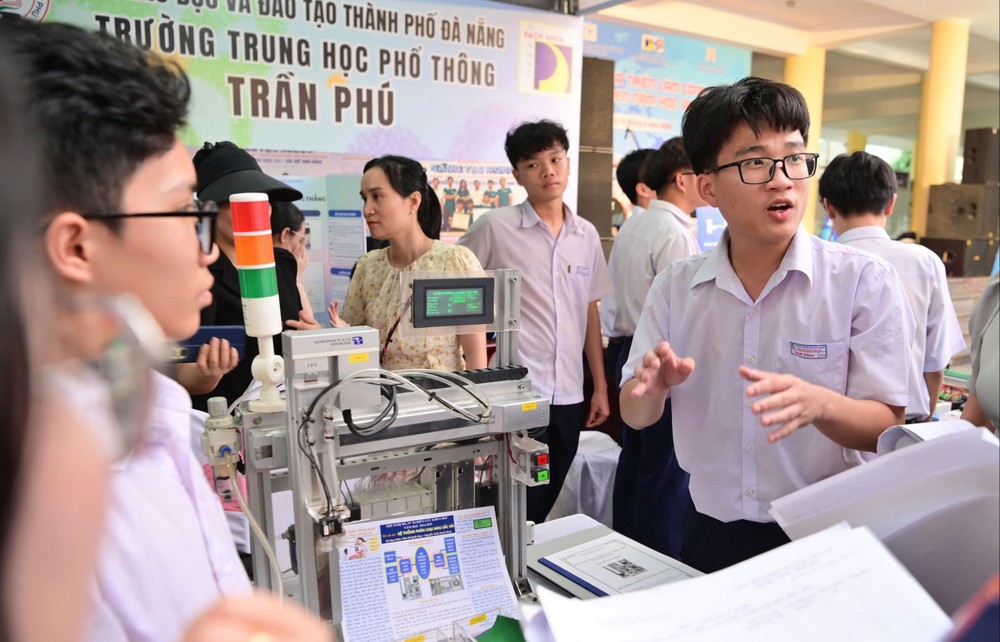
More than just an intellectual pursuit, STEM education serves as a crucial launchpad for the younger generation to thrive in the increasingly digital and technology-driven world.
At the BKDN Techshow 2025, hosted at Tran Phu High School in Hai Chau Ward, Da Nang City, Nguyen Gia Bach - a 10A4 student from Le Quy Don High School for the Gifted - presented his own STEM creation and tested it alongside his team’s robot from the Faculty of Advanced Science and Technology.
Students from Le Quy Don weren’t the only ones diving into innovation. Pupils from Ngo Quyen High School in An Hai Ward and Nguyen Van Thoai High School in Hoa Xuan Ward also had their first hands-on experience with cutting-edge mechanical equipment. At the University of Technical Education – University of Da Nang’s practice workshop, they explored eco-friendly dish presses, CNC machines, and laser engraving tools.
The physics movement lesson was brought to life through familiar, everyday imagery, making abstract concepts more relatable and intuitive for students. The event bridged the gap between theory and practice, sparking curiosity and excitement for science and technology.
Since 2020, the Department of Education and Training in Gia Lai Province has actively integrated STEM education into its curriculum, with a forward-thinking approach that includes artificial intelligence (AI) as a benchmark for evaluating the quality of educational institutions. The initiative is delivered through three key formats including STEM-integrated lessons, hands-on experiential activities, and scientific and technical research projects.
Students have responded with enthusiasm, showcasing both interest and innate talent. This early engagement helps schools and education leaders identify and nurture future innovators from a young age.
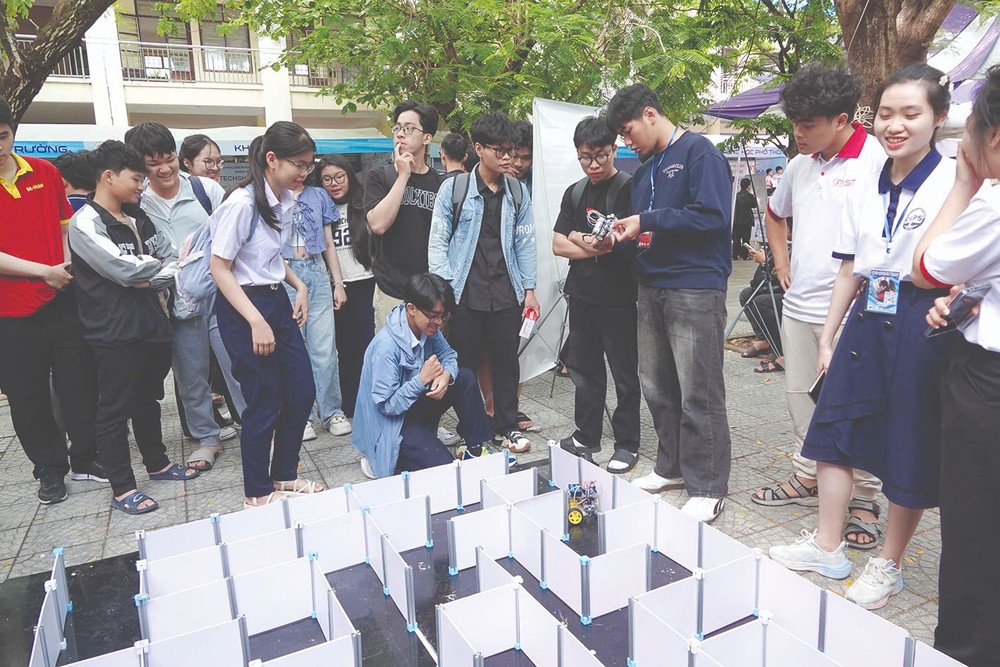
One of the leading unit is the Quy Nhon Center for Discovery and Innovation, nestled in the scenic Quy Hoa Valley in Gia Lai Province’s Quy Nhon Nam Ward. The center offers a dynamic range of programs from physics and chemistry demonstrations to astronomy and space exploration. Students also get hands-on with creative manufacturing projects like thermal pinwheels and scented candles, explore robotics and virtual reality, and even dive into culinary STEM.
In 2024 alone, the center extended its reach to over 30 primary and secondary schools across the region, making the most of summer breaks and holidays to provide enriching experiences beyond the classroom.
Despite significant investment and promising results, STEM education in Gia Lai Province is still in the early stages of widespread adoption. Continued efforts are needed to make it a core part of every student’s learning journey.
Director Nguyen Ngoc Hoa of the Quy Nhon Center for Discovery and Innovation said that the center is equipped with a team of seasoned experts and state-of-the-art technology sourced from leading nations. Despite these strengths, the most pressing challenge remains that is limited access for students.
STEM is still a new concept for many, especially those in remote and underserved areas, noted the center’s for Discovery and Innovation Director. While the infrastructure and expertise are in place, the lack of exposure and opportunities for students to engage with STEM activities continues to be a significant barrier to widespread adoption.
Deputy Director of the Department of Science and Technology of Gia Lai Province Nguyen Huu Ha announced a new initiative to scale up STEM education across the region. In collaboration with the Department of Education and Training, the province is rolling out a comprehensive STEM Project backed by a budget exceeding VND60 billion (US$2.3 million).
Under the plan, each district will establish a shared STEM center with the Quy Nhon Center for Discovery and Innovation designed as the provincial hub. The goal is to transform the center into the largest STEM facility in the Central Highlands, serving as a catalyst for regional innovation.
A key component of the project includes the development of a specialized robotics training program, designed to cultivate high-quality human resources in strategic fields such as artificial intelligence (AI) and semiconductor technology—areas critical to Vietnam’s future competitiveness.
In Da Nang, the University of Science and Technology (under Da Nang University) is partnering with ten high schools in the city and neighboring provinces, including Quang Ngai, to provide teacher training in the STEM approach.
According to Associate Professor Le Tien Dung, Vice Principal of the university, 25 teachers have joined the training program, receiving guidance from university lecturers on effectively integrating STEM methods into their teaching.
Despite these efforts, many students continue to concentrate on traditional disciplines such as Mathematics, Physics, and Chemistry, while emerging fields like Applied Biology, Environmental Technology, and Smart Agriculture remain underexplored. “This imbalance in academic focus could lead to future disparities in the labor market. Therefore, it's essential to incorporate STEM education into teacher training curricula and invest adequately in the infrastructure of teacher training institutions,” Associate Professor Dung emphasized.
Deputy Director of the Da Nang Department of Education and Training Pham Tan Ngoc Thuy highlighted the growing influence of STEM education. Many student-created technological products demonstrate high practical value, enhancing the overall quality of teaching and learning. As an interdisciplinary approach, STEM combines theoretical knowledge with hands-on experience, fostering critical thinking, problem-solving skills and global adaptability among students, he said.
To maximize its impact, Deputy Director Thuy stressed the need to further strengthen collaboration among educational institutions, businesses, and schools laying the foundation for a comprehensive and sustainable educational ecosystem.



